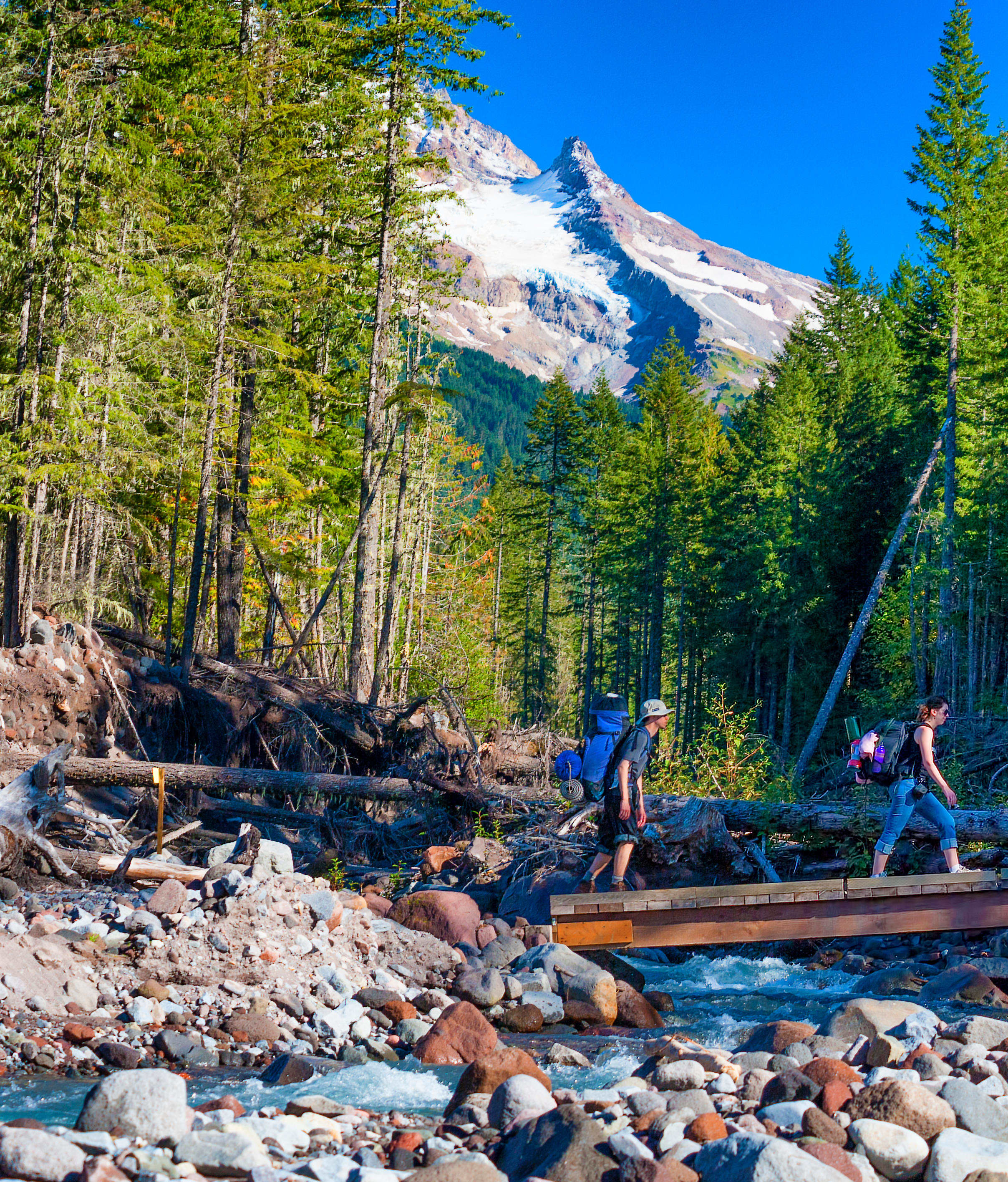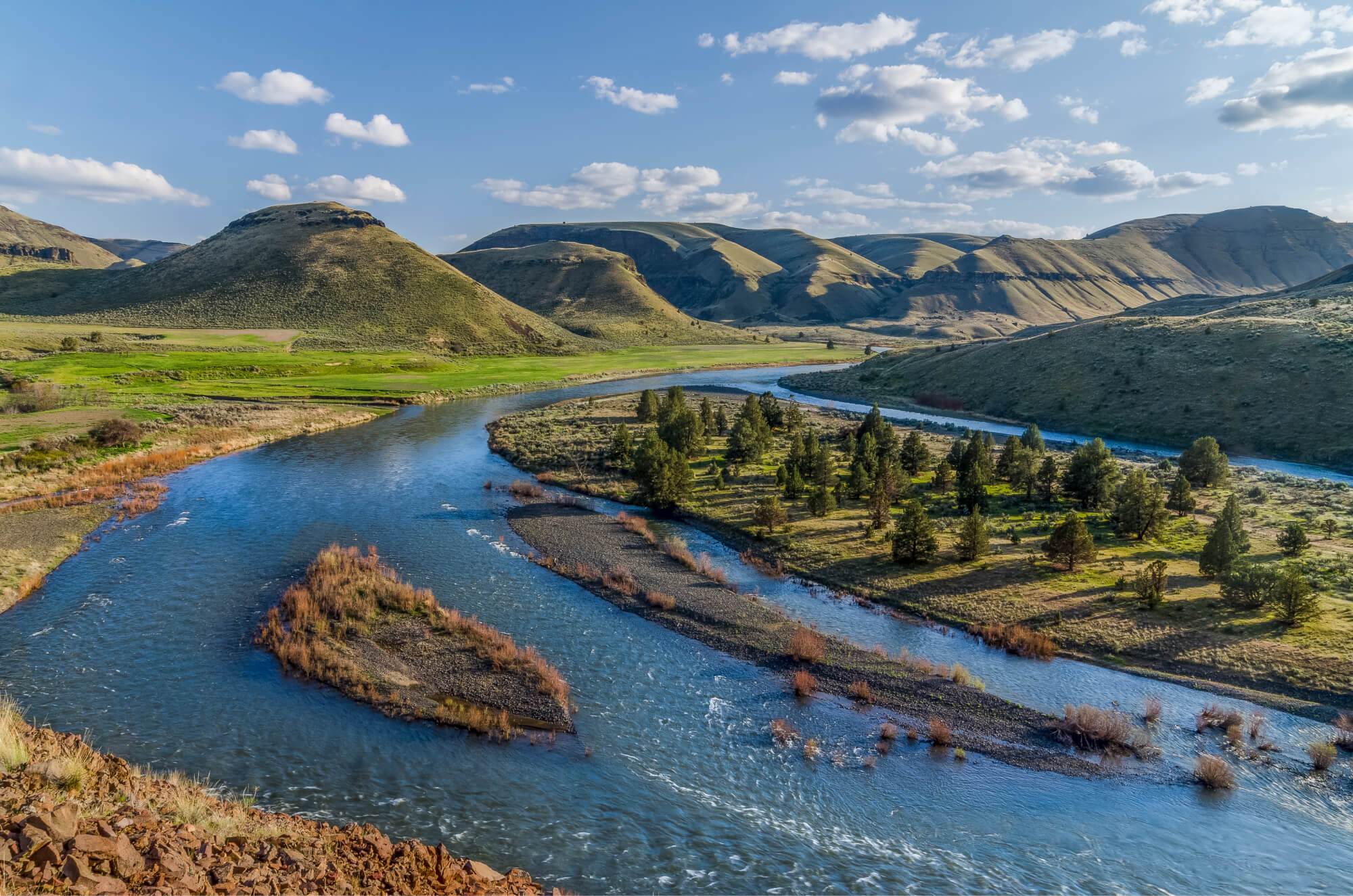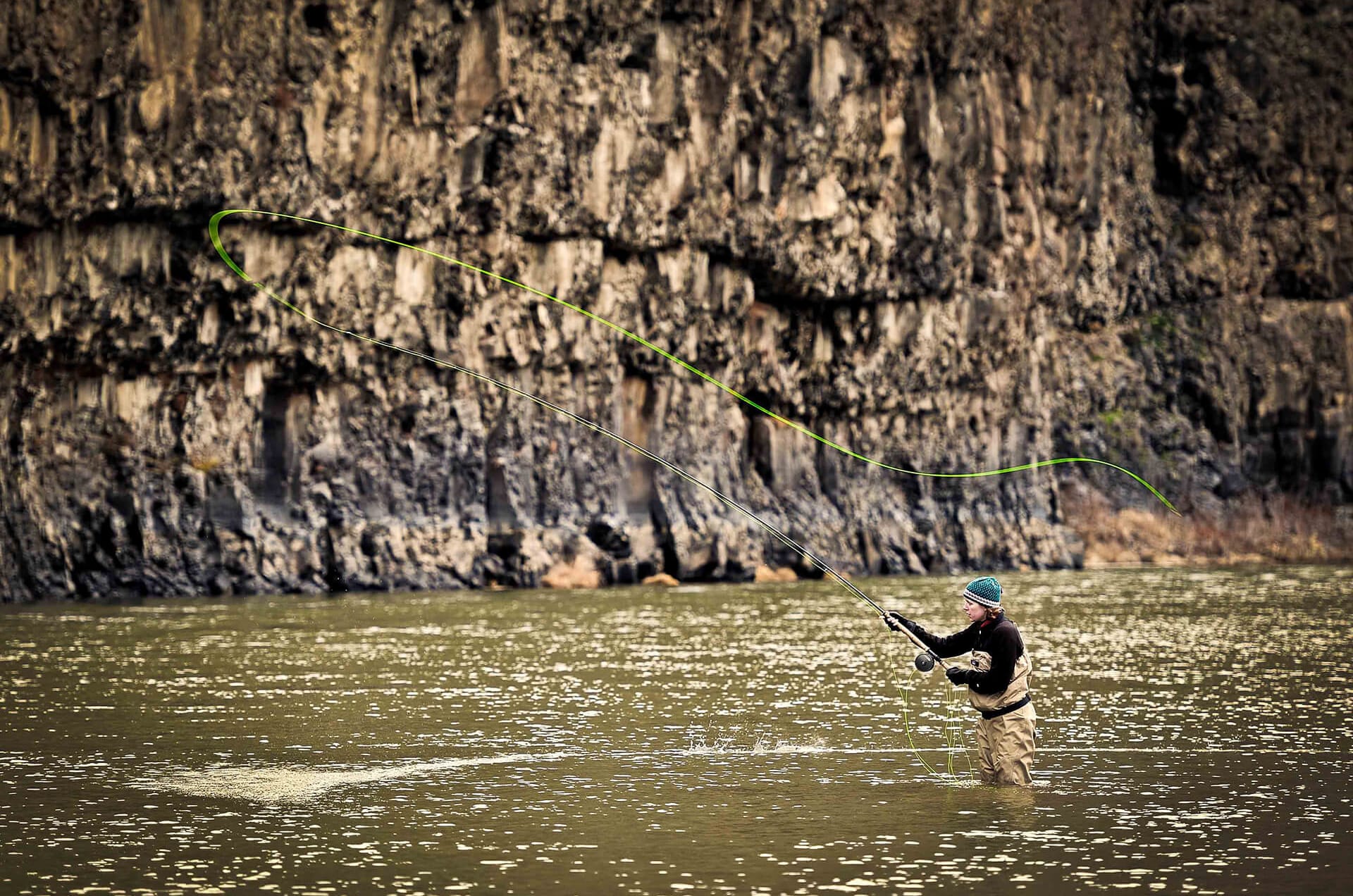In Northwest Oregon, Western Rivers Conservancy is creating a wild refuge along the Sandy River, a magnificent glacier-fed river only 25 miles from downtown Portland. The Sandy River and its tributaries are natural treasures, linking the glaciers of Mount Hood with the Columbia River. With deep, scenic gorges, runs of wild salmon and steelhead, and a string of public parks and nature preserves, the Sandy River has been a favorite playground and sanctuary for Oregonians for more than a century.
In the summer of 1999, WRC and Portland General Electric formed a partnership to restore the Sandy and Little Sandy rivers to health. PGE carried out its plans to remove Marmot Dam on the main-stem Sandy in 2007 and the Little Sandy Dam in 2008, making the rivers completely free flowing for the first time in a century. PGE also donated 1,500 acres to WRC so that we could conserve some of the finest stretches of the river. Since then, WRC has been working to protect 4,500 acres of riverlands in order to assemble continuous river corridors along 13 miles of the Sandy River and four miles of the Little Sandy River. These corridors are now becoming refuges for fish and wildlife and a public resource for hikers, floaters, anglers and viewers of salmon and wildlife. The new natural resource and recreation area will be managed by the Bureau of Land Management as an Area of Critical Environmental Concern (ACEC).
Assembling this refuge is a multi-year project for Western Rivers Conservancy. Dozens of landowners are involved, both individuals and corporations. To date, WRC has acquired 4,492 acres of high-quality habitat along ten river miles in the Sandy Basin. This includes 789 acres of forested properties donated by PGE. Land protection, combined with PGE's removal of dams and diversions in the Basin, are giving the Sandy and Little Sandy's runs of wild salmon and steelhead the best possible opportunity to recover and thrive. While WRC has met its goal of conserving 4,500 acres along the Sandy, we remain committed to this important river and remain on the lookout for lands that we can acquire and conserve for the sake of the river's incredible fish and wildlife and for all to enjoy.
Notable acquisitions include:
- Purchase of the historic Koch Ranch on Mensinger Bottom included nearly two miles of river frontage where the owner had proposed a major sand and gravel mine, vehemently opposed by local residents.
- Along the Sandy's spectacular Inner Gorge, WRC acquired 356 acres with approved building permits, preventing home site development along a critical reach. WRC has completed protection of the Inner Gorge, which provides some of the most thrilling whitewater in northwestern Oregon as well as deep pools and rearing habitat for threatened salmon and steelhead.
- Western Rivers Conservancy acquired 450 acres on the Little Sandy River, once a blue-ribbon steelhead stream, 200 acres on Wildcat Creek and 39 acres on the Salmon River, a critical tributary for fish. The lands WRC is acquiring are helping to create a north-south habitat connection between the old growth forests of the Bull Run Watershed Management Unit and the Salmon-Huckleberry Wilderness Area.
- In 2016, we conserved 120 acres along Little Joe Creek, an important salmon and steelhead bearing tributary to the Sandy. In addition to conserving prime habitat, the project also helped the BLM expand its nationally-recognized Sandy Ridge mountain bike park, which is located off the river and designed to minimize impact on the forest floor.
For up to date access information please visit the Bureau of Land Management's Sandy Wild and Scenic River webpage.
Funding for the Sandy River Project was made possible through generous contributions from multiple sources, including Paul G. Allen Forest Protection Foundation, Autzen Foundation, Boeing, The Collins Foundation, Flintridge Foundation, Zuniga Forbes Family Fund of The Oregon Community Foundation, Jane and Howard Glazer Fund of The Oregon Community Foundation, Jackson Foundation, Carl J. and Alma Johnson Fund of The Oregon Community Foundation, Jubitz Family Foundation, Lamb Foundation, Meyer Memorial Trust, Newman's Own Foundation, The Oregon Community Foundation, Portland General Electric, Portland General Electric's Habitat Fund, Rose E. Tucker Charitable Trust, Catherine and Mark Turner Fund of The Oregon Community Foundation, Margaret Watt Edwards Foundation, Wessinger Foundation and Westfly, Inc. and with the generous support of many additional individuals, foundations and businesses.
This project was also made possible thanks to the Land and Water Conservation Fund, America's most important federal conservation and recreation program. LWCF has protected critical open space and public lands in nearly every state and every county in the U.S.












